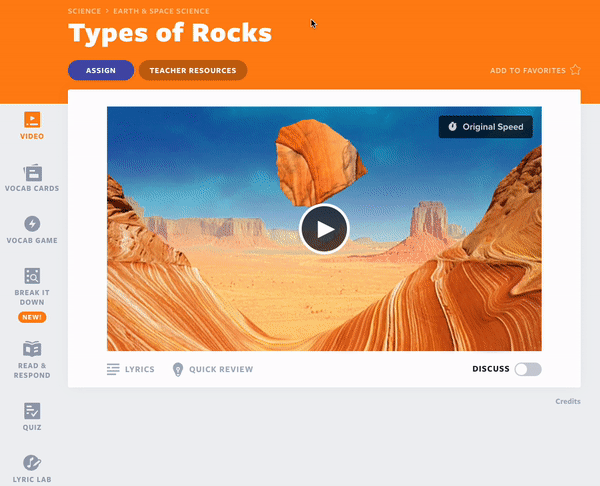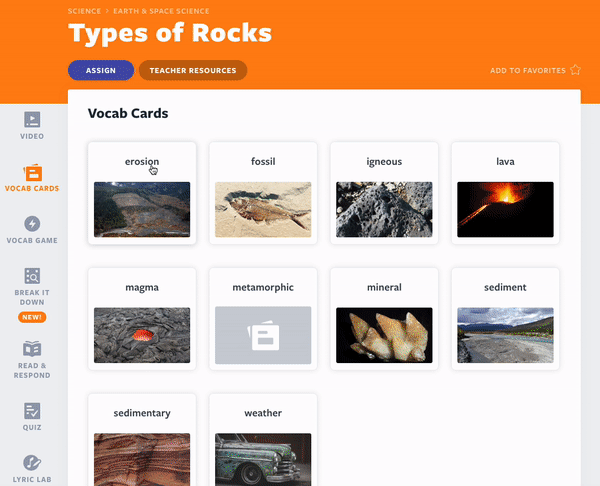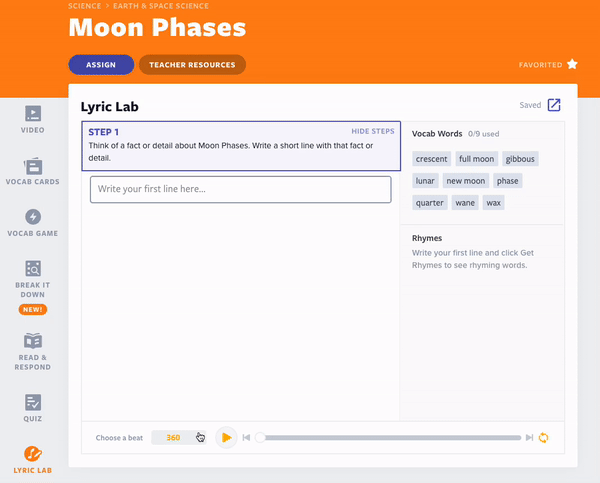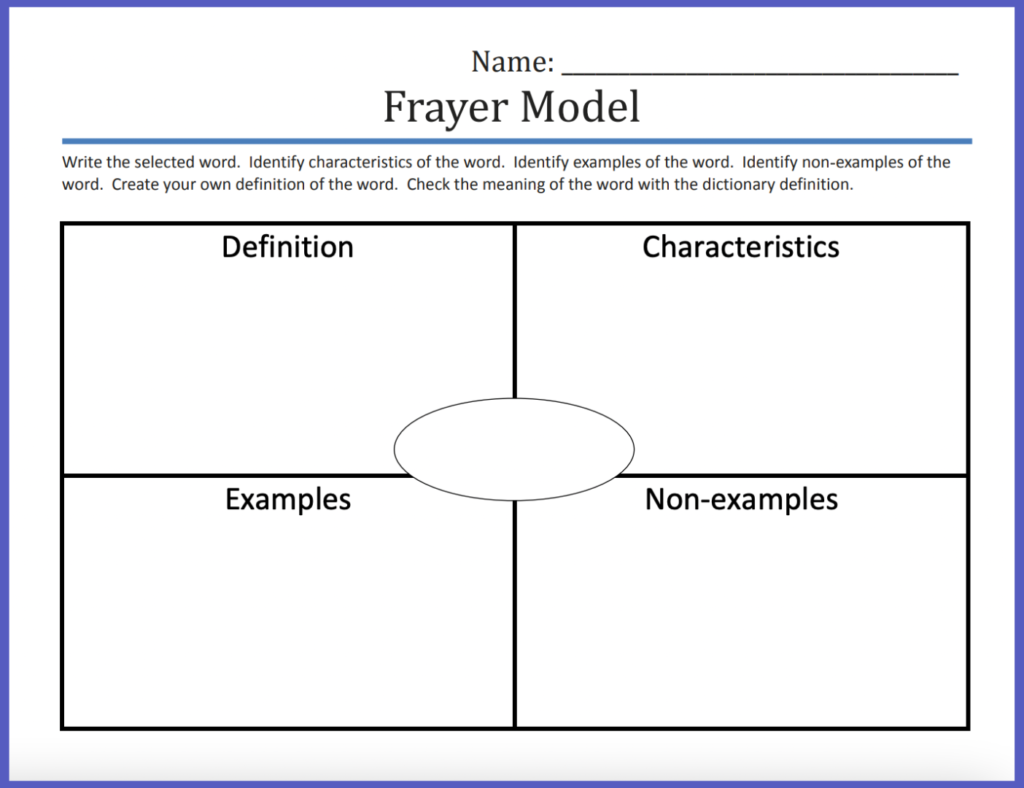Essential strategies to teach vocabulary can make a world of difference to students. After all, students are confronted with challenging vocabulary everywhere they look. Some vocabulary words–general academic words such as “interpretation,” “cite,” and “evaluate”– show up frequently across all subjects. Students who struggle with these words may not understand how to answer a question or complete an assignment. Other terms, while less common, are essential for mastering standards and knowledge within a specific subject. These are words like “mitochondria” in science, “integer” in math vocabulary, and “antagonist” in ELA. To complicate things further, many words have multiple meanings. A student may understand the meaning of “rational” when it describes a decision but be confused when they come across that word describing a number on their math homework!
Why is teaching vocabulary important?
Vocabulary is key to comprehension across the curriculum. It’s estimated that to comprehend a text, students need to know over 90% of the words in it (Hirsch, 2003). Without that necessary vocabulary, students can become disengaged from their reading. When that happens, they may fail to gain the content knowledge from the text and grow their literacy skills.
It isn’t enough to understand words only when they appear in a text. Mastering vocabulary means using and applying words in brand-new and creative contexts. For these reasons and more, studies show that vocabulary is a crucial indicator of students’ success in school, on tests, and in life.
Can Flocabulary help with teaching vocabulary?
At Flocabulary, vocabulary has always been at the heart of our lessons and activities. Our belief in the power of vocab informs our approach to learning across subjects. It all begins with our hip-hop songs and videos. Did you know that the average hip-hop song has a more extensive vocabulary and more unique words than any other genre? This is part of what makes our hip-hop songs and videos such effective teaching tools!
Vocabulary is used in the video and threaded through all the activities in each Flocabulary lesson. Below, we’ve outlined five essential strategies to teach vocabulary and how Flocabulary can help your students expand their vocabulary and master new words.
5 Essential strategies to teach vocabulary
1. Provide multiple exposures and contexts
Our first essential strategy to teach vocabulary might be the most important: provide students multiple exposures to each word. Multiple exposures are necessary for students to learn a word thoroughly. They first need to understand its usage and its meaning to use it in both their writing and conversation. This requires them to examine it multiple times as it is used in various authentic contexts. Just how many times? According to education researchers, it can take as many as 17 exposures.

Flocabulary lessons were designed with that need for multiple exposures and contexts in mind. Let’s use the Types of Rocks lesson as an example. The vocabulary words are listed in the Teacher Resources so that you can preview them with your students ahead of the lesson. Each vocab word is used at least once, and often multiple times, in the song’s lyrics. We encourage playing the video at least twice: Once all the way through and a second time with Discuss Mode turned on. In Discuss Mode, the video will pause at critical moments with discussion questions. You might prompt students to use their vocabulary words as they discuss these questions, giving them a first practice opportunity with their vocab.

Are you looking for even more word exposures and contexts? Our curriculum team selects vocab words for each lesson based on their importance to the learning objectives. The words are either general academic words like “analysis” or subject-specific words like “x-coordinate.” In both cases, the word is critical to unlocking learning and mastering standards. As such, a vocabulary word will likely appear more than once across different Flocab lessons! Try searching for a vocab word on Flocabulary to see where else that same word might appear.
Try our word Up lessons if you’re looking for a way to explicitly teach vocab and focus specifically on general academic vocabulary words. These lessons introduce words used in the context of hip-hop songs that tell engaging stories for a targeted grade level. The accompanying activities, including a printable handout, offer multiple exposures and varied practice opportunities.
2. Use the Frayer model
Another important strategy for teaching vocabulary is to give students a consistent structure they can use when encountering new words. The Frayer model, a popular graphic organizer for vocabulary, is a great way to provide that structure. The Frayer model typically includes four boxes for each word with space for students to write a definition, list examples, list non-examples, and describe features or facts. Students can complete the Frayer model before, during, or after reading. And when they are done, they can use the Frayer model to study and review.
Flocabulary’s Vocab Cards are modeled off the Frayer model. Assigning these is a great way to teach vocabulary with a specific structure within the Flocab platform. On the Vocab Cards, students can see a definition, part of speech, example sentences, synonyms, antonyms, and an image representing the word. There are two prompts for them to complete: One to practice writing their example sentence and another to draw a representation of the word. This activity appeals to multiple modalities and provides two structured practice opportunities for every word.
3. Create gamified learning experiences
Much has been written about the power of gamified experiences in education. Games can engage students, energize your class, create incentives for learning, and promote collaboration and healthy competition. Turning vocab instruction and practice into a game is a great strategy to teach vocabulary.
How do you teach vocabulary with a game? A simple way is to make a game of spotting the vocab words. Ask students to keep an eye out for vocab words throughout class or in their reading. There are other vocab games you can use as part of a classroom routine to practice and reinforce vocab learning, such as:
- Charades: Students can work in partners or teams to act out a vocabulary word and have their teammates guess it correctly.
- Pictionary: Students can draw a vocabulary word and have their teammates guess it correctly.
- Fill-in-the-blanks: Students can develop a fill-in-the-blank sentence for their teammates to complete or race to identify which vocab word is being defined or described.
And if you’re teaching vocabulary with Flocabulary, try the Vocab Game! Students will complete fill-in-the-blank sentences and match definitions, images, synonyms, and antonyms with the right vocabulary word. Correct answers add new instruments to build a Flocab beat! By the end of the game, students will be able to listen to a beat they’ve created by completing the fill-in-the-blanks.
4. Student voice and creativity opportunities
Students often crave opportunities to engage more creatively with their learning. “Creating” is at the very top of Bloom’s Taxonomy and is considered to require higher-order thinking skills. While most tips on this list won’t take much time to implement, this one can take longer, but the investment can be well worth the time. With that in mind, you can consider a creative vocab assignment.
Here are a few ways to get creative when teaching vocabulary:
- Create a picture book or other visual that could teach younger students the vocabulary while telling a story. Using our Types of Rocks example from above, students could create a picture book from the perspective of one type of rock using each vocab word at least once.
- Create and perform a skit that uses vocab in a new creative context. Sticking with the Types of Rocks example again, their skit might dramatize the process by which rocks transform.
- Create a poem that uses examples or definitions of vocabulary words. Students can use the Flocab lyrics as a model for their poetry. You might even have them address their poem to one type of rock as an extra creative challenge!

In Flocabulary, you can use Lyric Lab, rhyme-writing activity, to have students create their songs using their vocabulary words. It includes a rhyming dictionary and beats that students can use to help them write their rap or poem. It also contains a word bank that keeps track of which vocabulary words they’ve used in their rhymes from the lesson. You can have students write songs in Lyric Lab and perform them in class to celebrate the end of a unit!
5. Teach the vocab strategies
Teaching discrete lists of vocabulary words is one crucial way to increase your students’ vocabulary. But just as important is teaching them strategies to use when encountering any unknown word independently.
Devoting class time to teaching the strategies themselves can pay off in dividends! These strategies include using a dictionary, looking at roots and word parts (prefixes and suffixes), and using clues from the context of their reading. With these tools, students will be able to handle challenging words and will naturally expand their vocabulary.
If you’re teaching vocabulary strategies, Flocabulary can help! Use these lessons to help your students learn the tools that can help them overcome any challenging vocabulary word:
Start using these strategies to teach vocabulary
Suppose you’ve been wondering how to teach vocabulary in a way that is essential and engaging for your students. In that case, these five strategies are a great way to get started. Flocabulary can support you as you use each of them. Flocabulary lessons on Context Clues, Dictionary Skills, and more can help students learn the strategies they’ll need when encountering challenging words in and outside the classroom. Multiple exposures and contexts are baked into Flocabulary lessons and activities. Flocabulary’s Vocab Cards offer a Frayer-model-inspired structure for word learning. With the Vocab Game, students can get competitive to amplify their learning, and with Lyric Lab, they can get creative.
Vocabulary is a key to comprehension across the curriculum, and Flocabulary is here to help! Sign up for Flocabulary to access these strategies and lessons.
- Coinsmart. Europe’s Best Bitcoin and Crypto Exchange.Click Here
- Platoblockchain. Web3 Metaverse Intelligence. Knowledge Amplified. Access Here.
- Source: https://blog.flocabulary.com/best-practices-k12-vocabulary-instruction/




